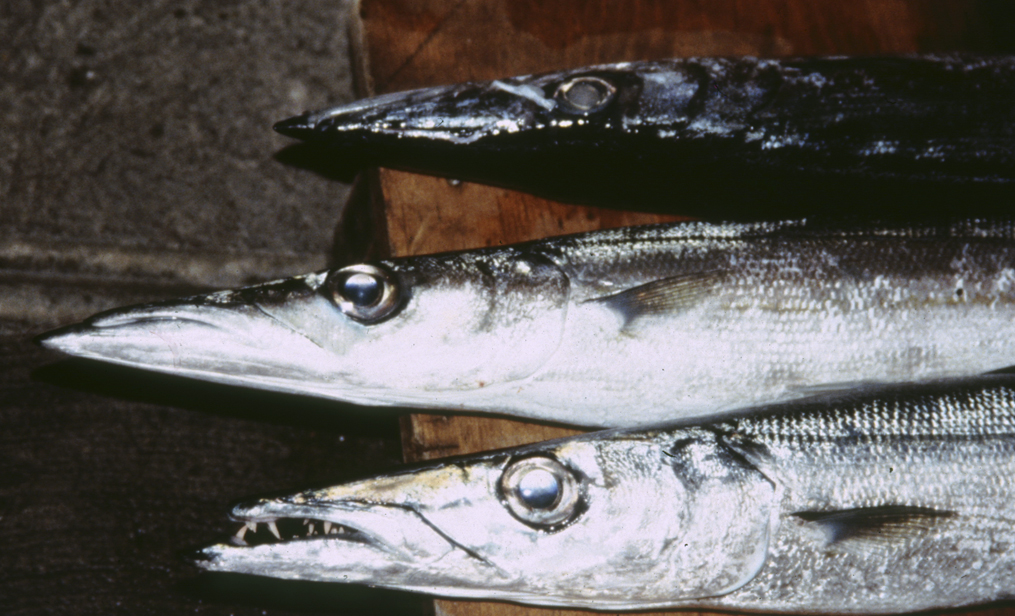Monday, September 17, 2012

A great barracuda cruises through Shark’s Cove ©Susan Scott
Last month a reader sent a note about snorkeling with a large barracuda off Waimanalo’s Kaiona Beach Park. The fish was “big, menacing and aggressive,” Bonnie wrote. “I photographed it going out to the open ocean. The next thing we knew, it was coming after us. Yikes. Big adventures on the high seas.”
I remembered this email recently when I turned a corner and came face-to-face with a 2-foot-long barracuda in the sparkling clear water of Shark’s Cove. The fish didn’t swim toward me, but it didn’t retreat, either. It just hung there, motionless.
I did, too, thrilled at the chance to admire this picture-perfect marine predator.
I wasn’t always so brave. Years ago while snorkeling in the Caribbean, my mother-in-law and I nearly set speed records swimming back to the boat after encountering a 3- to 4-foot barracuda. We still laugh over thinking we could outswim that fish. Or that it had any interest in biting us.
Barracudas are basically torpedoes with teeth, an ideal form for ambushing fast-swimming prey. The barracuda’s rear fin placement gives the fish the amount of thrust it needs to strike fast. In a single second, a barracuda can lunge 40 feet.
I once saw such a lightning strike on a tilapia in the Ala Wai Boat Harbor, but it happened so fast, I can’t honestly say I saw it.
Young barracudas often hang motionless near the surface, waiting for prey to swim within striking distance. The tilapia swam past. The barracuda twitched. The tilapia was gone.
Of the 20 or so barracuda species, only the great barracuda — called kaku in Hawaii — has been implicated in attacks on humans. (Hawaii hosts two other, smaller species.) The kaku grows to 5.6 feet long and can weigh 85 pounds (world record, Philippines).
Kaku have remarkable teeth on the outer edges of the jaws and also on the roof and floor of the mouth. One long, fanglike set fits into holes in the opposing jaw, allowing the fish to close its mouth. Other teeth are triangular with razor-sharp edges that cut like scissors.

Barracuda Oahu fish market. ©Susan Scott
Barracudas eat only fish, swallowing small ones whole. With a slash or two, the barracuda cuts large fish into bite-size pupu.
As top predators, barracudas are bold, sometimes swimming toward people. This looks aggressive, but the hunter is looking for fish to eat, not humans to attack.
If you snorkel in clear water so the barracuda can see you’re not a fish, you don’t carry speared fish and you don’t wear jewelry that sparkles like fish scales, there is no reason to fear barracudas.
After shooting a photo of the barracuda, I moved on, grateful to have learned enough about these remarkable fish that I’m no longer afraid of them. Even so, any encounter with a kaku is big adventure on the high seas. Thanks, Bonnie, for writing.
©2012 Susan Scott